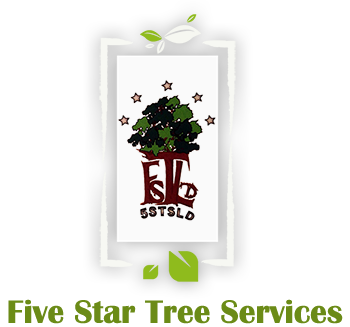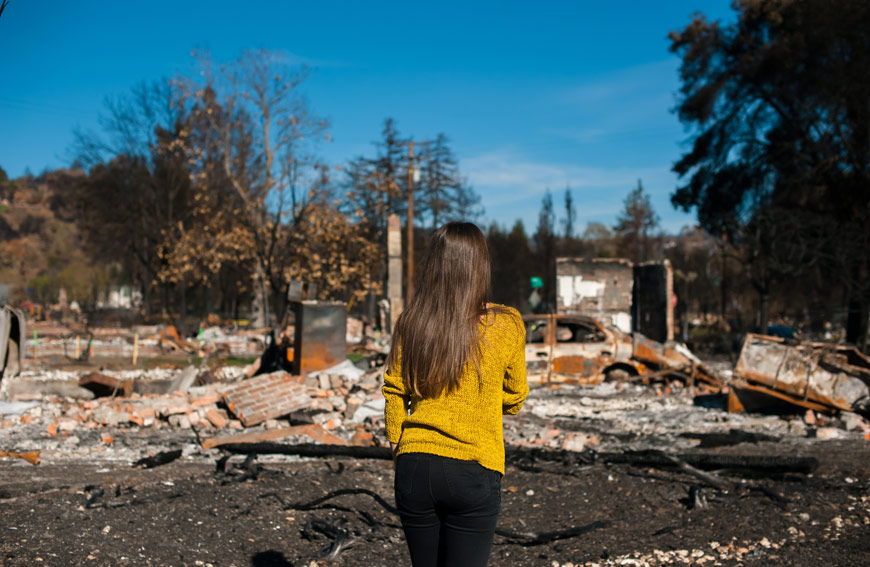We are lucky that living in Ontario typically means that wildfires are rare. But just like everything else, there is still a chance that they can happen under the right conditions. When there is drought, dry conditions, and wind, this creates the perfect conditions for increased risk of fires happening. Just like any burn, there are varying degrees of severity based on intensity. Our team at Five Star Tree Services hopes that you never have to deal with a wildfire, but in case you do, we have some advice on proper measures to take and what you can do to treat a tree damaged by fire.
Recovery
A common question people ask after a fire happens is how they can help trees survive. The answer to this question depends on the damage type, fire duration, length of dehydration, and burn intensity. Additionally, you need to take into account the type of tree, its age, and the time of year it is.
For example, there are certain species of trees which have naturally adapted to fires. These include longleaf pine, ponderosa pine, and bur oak. They have developed a resilience to surface fires and understory fires. But young trees or trees that are just coming out of their winter dormancy in the spring are more likely to suffer more severe damage.
There are many ways a fire can damage a tree, these can include:
-Hydrophobic soils (stop water from being absorbed) with organic matter being lost
-Branch or trunk damage
-Root damage
-Needle or leaf scorch
-Camdium (inner tree tissue) injury, causing girdling in the stem
-Bud health
Care
For how you can help restore a burned tree, as well as getting it back to health, there are a few immediate things you can do. If most of the crown has live buds and it also has living cambium for most of the stem, there is a chance that it can survive.
Watering
After a tree has been damaged by a fire, the first thing you need to do is water it. The soil is most likely completely dried out. It can even become hydrophobic, meaning it will repel water and not allow it to soak in. You should water slowly in order to successfully saturate the soil. Laying a drip or soaker hose and allowing it to steadily and slowly add water back into the soil will help your tree. Make sure to get the entire area under the canopy of your tree, right from the trunk to the branch tips.
After a while, dig a little way down to ensure the water is penetrating the soil successfully and not just running off. If the soil is not absorbing the water, try using a wetting agent, as well as raking the top layer in order to loosen the water-resistant soil. If the soil has organic matter that was burned, while raking the surface, add an inch of compost. After, put mulch around the base of the tree and a thin layer of weed-free straw. You can also use tree-based double-grounded mulch. This will help with water retention and absorption.
Protection
If your tree has burned bark, in order to prevent further sunburn, wrap the trunks and major limbs with either a light coloured cloth, cardboard, or tree wrap. This can be done for up to a year.
Fertilization
Once you have successfully watered and saturated the soil, use a slow-release fertilizer to help restore your burned tree. This is going to help replace nutrients that were lost in the fire.
Pest Prevention
Any stressed or weak trees are more prone to being attacked by insects. Be proactive and treat them for boring insects. This is important to their survival if you want your tree to recover.
Pruning
After a tree has been burned, you need to remove all dead or dangerous branches. It’s important to remove these hazardous branches outside of the tree’s branch collar with proper cuts. If you feel this is unsafe for you to do, make sure to contact your local arborist for assistance. A lot of deciduous trees are able to sprout new growth from lost branches. However, most conifers will regrow lower trunk branches, except pinch pine.
Prevention
If you are worried about a fire happening again in the future, you can focus on preventative measures to help make sure your trees survive.
The first thing you should do is remove dead limbs and trees from your yard, as these are potential fuel for fires. Trim back lower limbs on all trees to prevent fires from climbing up into canopies. Regularly mow the grass and trim shrubs. You can also choose to place certain species that are fire resilient. Lastly, when you are designing your yard, make it so that there is 50 feet or more of space between your trees and structures, like your house. Plan for permanent firebreaks, safety zones, escape routes, and multiple water sources around the property to allow better usage in case of a fire.
How Five Star Tree Services Can Help
We hope you never have to go through a wildfire or burned trees. But being prepared with this knowledge can help you save your trees if it ever happens. Our team at Five Star Tree Services will also be here to help you, whenever you need it. If you ever need our Emergency Tree Services in Richmond Hill, contact us right away at (416) 990-3355!


